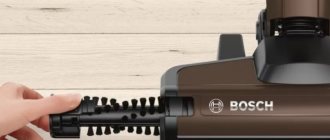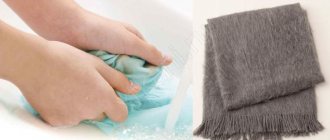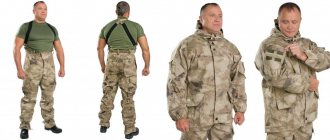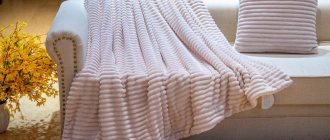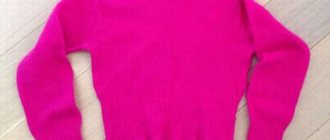Why wash embroidery after finishing work?
To remove the water-soluble canvas, washing will be required.
Often, marking lines drawn with a pencil or marker remain on the products. When the drawing is ready, these guidelines need to be erased .
Washing is also necessary in the following cases:
- removing sebum from the fingers, which can cause the fabric and threads to turn yellow;
- leveling the deforming influences exerted when working on the drawing;
- removal of soluble canvas;
- removing planted stains;
- alignment of the threads with which the pattern is made.
Editorial Voice
Matryona
Fan of embroidery and sewing
Ask a Question
To make it easier to remove markings, instead of a lead pencil, it is better to use a marker that easily dissolves in water . But the washing temperature of the embroidered product in this case should be low (running water will do). A warm and especially hot environment, on the contrary, helps to fix the marker.
Whitening
Of course, you shouldn’t think about bleaching an embroidered picture. But the fabric around the embroidery may turn yellow over time. Or during washing, colored streaks from threads appear on the canvas.
Whitening the border of a painting begins with identifying the fabric from which it is made. Cotton, linen and other dense materials can withstand even aggressive chlorine bleaches. For more delicate fabrics, there are more gentle stain removers.
Whitening
Following these rules will help you avoid damaging your embroidery:
- bleach is applied directly to the stains, very carefully, trying not to get on the stitches;
- if you are close to a colored area, you should use a cotton pad or swab;
- after removing the yellowness, the product is washed off under the pressure of a large amount of water;
- Finally, you need to wash the entire product in water with added salt to avoid the appearance of white streaks.
ARTICLE FOR YOU
How to wash nylon clothes: in the washing machine and by hand
In addition to household chemicals, you can use available products. The following have whitening properties:
- citric acid or lemon juice;
- hydrogen peroxide;
- ammonia;
- baking soda;
- table vinegar.
The methods of using “folk” remedies are similar to industrial products.
Folk remedies for washing
Floss and wash
Different types of floss tolerate the washing process differently . You should pay attention to the information that the manufacturer puts on the packaging. For example, hand-dyed threads need to be treated with care; they are often not recommended to be washed at all.
- Cotton tolerates high temperatures well (up to 90 degrees). Washing recommendations for threads made from it are limited only by the durability of the pigment used.
- Sectional dyed yarn is washed in not very hot water (up to 50-55 degrees).
- For threads with a shimmering effect in the dark, only cool water is suitable.
- It is not recommended to wash metal threads . They are characterized by increased capriciousness. If possible, the embroidery should be extended before introducing them into the pattern.
Cotton
Sectional
Fluorescent
Metallized
Cheap floss often fades a lot when immersed in water . The released pigment can stain other areas of the tissue. To assess the risk of such an incident, it is recommended that before embroidering, wrap a piece of thread in a white cotton cloth and stretch it lightly. If the yarn has not faded, there is no need to worry about the finished product.
An indicator of a tendency to shed is the staining of the needlewoman’s fingers while doing work. You can combat this by placing the product in a solution of acetic acid (1 tablespoon per liter of water) for 1-2 minutes.
If pigment release is detected already during washing, the embroidery is subjected to repeated rinsing until the water stops being colored.
Do you understand the floss you use to embroider?
Not really
Other embroideries
If you decide to clean work that contains other elements, then we will present several recommendations in this regard: how to properly wash embroidery.
Beads
Embroidery with beads is the most fragile and capricious. Even the most expensive high-quality material fades when exposed to water for a long time, let alone budget “beads”. What is the best way to wash bead embroidery? This can only be done before sewing on this decor. If you just need to remove a pencil or marker from your work, then there is only one way to do it: quickly rinse the product in the prepared soap solution.
It is not recommended to wash bead embroidery
Still, is it possible to wash bead embroidery? It's better to do without it. Another option for cleaning stained bead work: carefully use an old toothbrush dipped in soap suds to carefully treat the specifically dirty area. If the beads themselves become dirty, you can quietly clean them with a damp cloth—hygienic or intended for office equipment.
Wool threads
Wool threads have the following annoying drawback - they shrink when washed. To prevent this from happening, you should wash your work only in cool water. When it comes to detergents, you need to use those that are specifically designed for woolen products. You can secure the result with a rinse aid for the same material.
Wool threads may become distorted in hot water
Such work is dried in the same way as embroidered floss. Iron only when completely dry on a soft towel, being careful not to lean the iron tightly against the product.
Hand or machine wash
Machine wash only proven threads, in a bag, without spinning
In general, the initial washing of an embroidered item should be done by hand.
If high-quality threads are used, previously tested for shedding tendency, and the product itself is not deformed, you can wash it in a machine . However, you need to follow a number of rules: set a gentle mode without spinning with a temperature no higher than 30 degrees, place the item in a special bag. For washing, only liquid detergents that do not contain bleach are used.
Editorial Voice
Matryona
Fan of embroidery and sewing
Ask a Question
The prohibition on spinning also applies after removing the product from the machine. It is shaken and laid to dry on a horizontal surface .
Prevent color loss
Floss threads require a delicate attitude. The brightness and saturation of colors is maintained through the correct selection of detergents and temperature conditions.
There are several techniques that allow you to clean embroidery without damaging it:
- You can prevent color loss and deformation by washing the painting directly on the hoop or on a wooden frame. The fabric should be tightly and evenly stretched, without folds or sagging. Using a soap solution based on laundry soap, make stroking movements along the perimeter of the embroidery. This can be done with your hand or a soft sponge. Next, the foam is washed off with cool water.
- The product can be soaked in soapy water for 5-10 minutes. Next, rinse with plenty of water.
- You can restore the brightness of faded threads with a solution of table vinegar and water (twenty grams per liter). To do this, wipe the threads with a cotton pad soaked in the product.
- Using high-quality threads will prevent shedding during washing. If traces of paint remain on your fingers while working, then the product will almost certainly fade upon contact with water. You can avoid this by washing in cool water with a little apple cider vinegar. Detergents are not recommended in this case.
You should not use radical means and methods unless absolutely necessary. You can wash off the dust and refresh the painting in cool water. More serious dirt and stains require washing.
General recommendations for washing
The embroidered panel can be stretched on a hoop. Apply the product to the product moistened with water using a sponge sponge and create foam with gentle movements. If there are stains on the painting, when processing them, you should not focus on mechanical action. Instead, it's better to use more foam. At the end of the procedure, the product is thoroughly washed off (this can be done in the shower).
If soluble canvas was used during the work , the straightened surface should be moistened with water. Soon the soaked element can be removed by hand. After this, the item is washed on a hoop, using the usual manual method (without intense friction) or in a machine in a gentle mode.
The speed of removal of soluble canvas depends on temperature . When soaking in 50-degree water, 10 minutes is enough. But such an environment is only suitable for high-quality threads with long-lasting color. If the floss is cheap or has not been properly tested, soak the work in salted, non-hot water for 30 minutes. If the canvas is not completely dissolved, the embroidery is carefully washed at a temperature of 40 degrees.
Products with beads are especially capricious . If possible, you should not wash them at all. If you need to remove dirt or traces of markings, you can soap a sanitary stick and treat the desired areas with it. Soiled beads can be carefully wiped with tissues for equipment.
If the embroidery is made with woolen threads , it can only be washed in cold water, since the material is prone to shrinkage at high temperatures. You can iron such a product only after it has completely dried, trying to avoid close contact with the iron.
What to do with stains
Of course, needlework requires accuracy from the craftswoman. But no one is guaranteed against accidents. Stains on embroidery can irreparably ruin the work, so it’s worth keeping in mind several ways to save it. Taking into account the fact that strong stain removers will inevitably discolor embroidery threads, you will have to save the situation using the following means:
We recommend:
At what temperature should you wash things?
- Acetic acid. In addition to preventing thread discoloration, it helps get rid of rust.
- Baking soda is an indispensable tool in the fight against mold and its traces.
- Citric acid removes tea stains.
- Use rubbing alcohol to remove greasy stains.
- Hydrogen peroxide saves the situation when iron marks, blood stains or traces of coffee remain on the canvas.
- Marks from felt-tip pens, pens, felt-tip pens and pencils are removed using Antipyatin soap.
The pencil situation requires special attention. Despite the fact that today there are special soluble markers for marking outlines, many craftswomen use a regular pencil for these purposes. The motivation is simple: it is clearly visible on a light canvas and is always at hand. But the task of how to remove a pencil from embroidery can turn into an intractable problem. The first step is Antipyatin soap. A more serious solution to the problem is to apply Vanish stain remover to the surface of the work. If there are only a few pencil marks, you can try to wipe them off with a regular eraser.
Note! The principle “it is better to prevent than to eliminate the consequences” fully applies to the use of a marking pencil. It is much easier to refuse it than to remove traces from the finished work.
Selecting a detergent
liquid products are suitable for embroidered items Powder grains can get stuck between the threads or create streaks if rinsing is not thorough enough.
The following compositions are suitable:
- Liquid product intended for colored items .
- Simple laundry soap . Make shavings from it on a grater, pour in heated water (0.2 liters for every 10 g), keep on fire, stirring until the soap dissolves. Once the mixture has cooled, it is ready to use.
- Liquid soap that does not contain dyes.
- Powder for hand washing, diluted in water . The substance must be filtered through several layers of gauze. This helps filter out the particles.
compositions for white clothes to wash embroidery . They contain aggressive components that can make the colors of the floss fade.
Soak
Before soaking, you need to prepare a solution of powder or liquid composition . You can add table salt (1 tbsp) to it - this helps maintain brightness. It is necessary to thoroughly dissolve the bulk components and strain the solution. If there is sediment, it is removed. The temperature of the liquid should not exceed 40 degrees (for demanding threads it should be even lower). Soaking duration is 30-60 minutes .
Rinse and dry
Rinsing is carried out first in water at 25-30 degrees . If necessary, it can be changed several times. After all the foam has been washed away, the embroidery is rinsed in cold water. To preserve the brightness of the colors, you can add vinegar (1 tsp per liter).
Dry the embroidery on a horizontal surface, placing a dry cloth under it . There is no need to hang the product on a rope - as a result, deformations often occur.
Editorial Voice
Matryona
Fan of embroidery and sewing
Ask a Question
Squeezing out work is strictly prohibited . You can only wrap it in terry cloth and gently press on it.
When is it necessary to pre-soak embroidery?
In principle, pre-soaking in any case makes washing easier, so this stage of caring for embroidered work should not be skipped. But there are cases when it is simply impossible to do without it.
If during the embroidery process it is discovered that the threads are dyed, then pre-soaking them in cold water and vinegar will reduce the likelihood that the embroidery will “fading”. Soaking in hot water (50°C) is mandatory if water-soluble canvas was used for embroidery. At lower temperatures it does not dissolve. The soaking time in this case is 10 minutes. If the canvas has not completely dissolved, the procedure should be repeated.
Selected tips
The steam generator will help to cope with distortions and dented places
If the markings are applied to the fabric with a water-soluble marker, they can usually be removed with a cold rinse before soaking. But not all pigments used for this purpose are amenable to this procedure.
The following tips will help you avoid deformation when washing:
- Secure the ends of the threads (for example, with knots), otherwise there is a high risk that the material will begin to fluff, and in the worst case, the pattern will unravel.
- If short stitches sag on washed work, you can unravel these areas and embroider them again . Another option is to tighten it from the wrong side and then secure it.
- You can clean the product using foam polyurethane . The embroidery is attached to it with pins, treated with a detergent solution, and then proceed to rinsing.
Editorial Voice
Matryona
Fan of embroidery and sewing
Ask a Question
The steam generator copes well with distortions . The work is fixed on a solid base and thoroughly steamed. After this, the embroidery remains in this position for 3-4 days so that the shape is fixed.
Fighting stains
If there are contaminants on the product, the removal agent is selected in accordance with their type. Do not use aggressive substances (chlorine, acetone, ammonia, potassium permanganate) and compounds containing them, as well as gasoline, glycerin, and petroleum products.
Diluted citric acid (10 g per 0.1 liter of water) works well on tea stains, hydrogen peroxide on coffee, and blood drops from a pricked finger. Alcohol is suitable for removing various types of fats (including cosmetic creams). If you need to remove marking marks (including from stylus or pen paste), you can buy Antipyatin soap.
Contaminants need to be treated pointwise , without affecting the entire area of the pattern. After this, the product is thoroughly washed off with cold water. The item is then soaked and washed.
Helpful information
Before washing cross stitch, you need to read the following information:
The threads will 100% shed if traces of paint remain on your fingers while working. In this case, you cannot do without pre-fixing the color.
- Fabrics with metallized threads cannot be washed.
- If the product requires additional decorative elements, then sew them on after washing is completed.
- Washing with detergents is only used if there is serious contamination on the fabric. When the product just needs to be refreshed, just rinse it in warm water.

